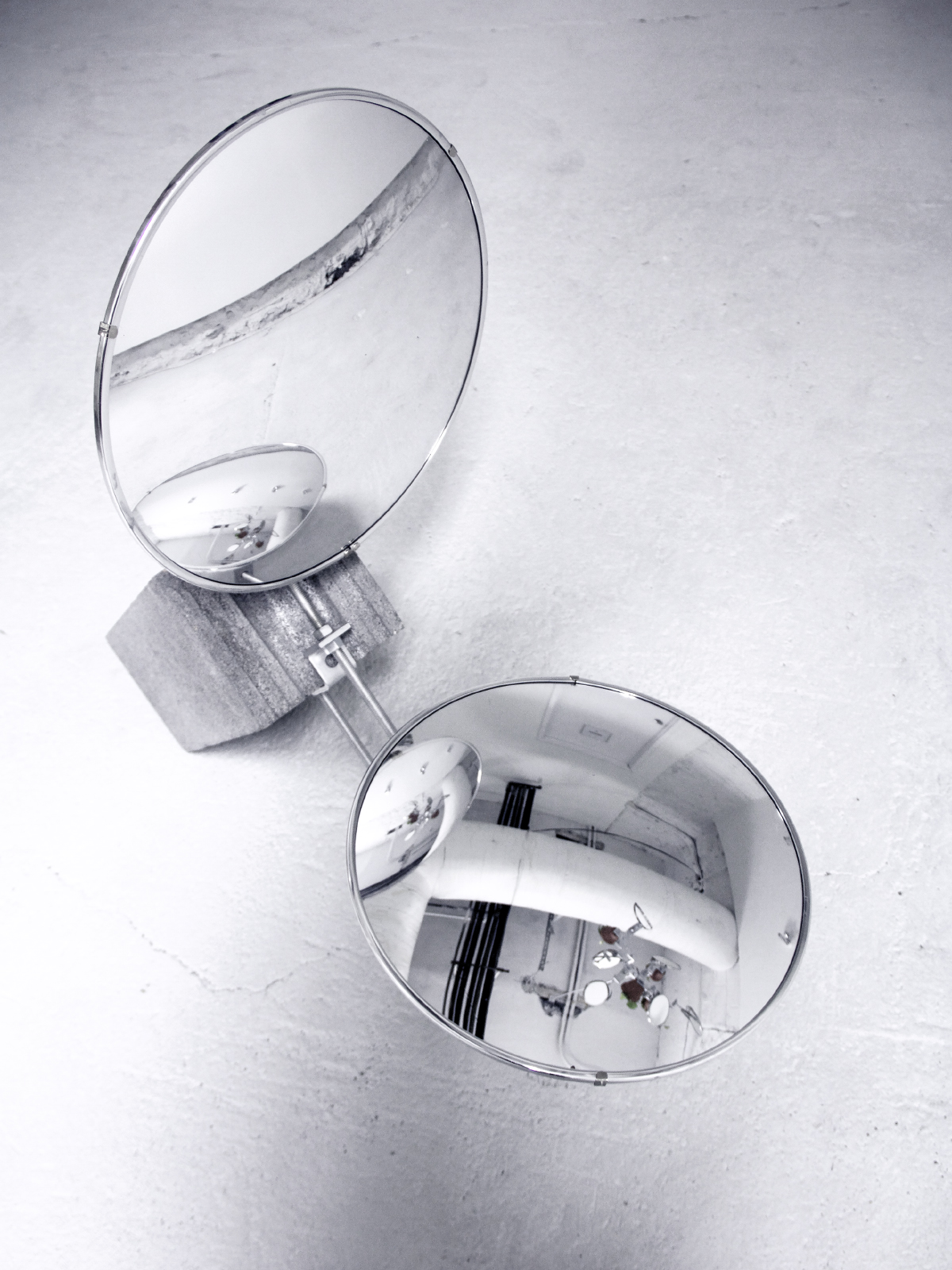2. Measure of Dispersion (series) sculpture / Narcissus
Narcissus
_ Metal, Mirror, Concrete
![]()
"In Greek mythology, Narcissus (/nɑrˈsɪsəs/; Greek: Νάρκισσος, Narkissos) was a hunter from Thespiae in Boeotia who was known for his beauty. He was the son of the river god Cephissus and nymph Liriope.[1] He was proud, in that he disdained those who loved him. Nemesis noticed this behavior and attracted Narcissus to a pool, where he saw his own reflection in the water and fell in love with it, not realizing it was merely an image. Unable to leave the beauty of his reflection, Narcissus drowned."
The series “Measure of Dispersion” is comprised of sculptures and installations that aim to amplify and manipulate the spectator’s field of vision through the use of blind spot mirrors and a modular metal structure. It uses ordinary materials that are combined in different ways to reconfigure the apprehension of one's surroundings, and change one's own sense of location.
![]()
Narcissus
_ Metal, Mirror, Concrete
5 x 5 x 3’
New York, July 2015

"In Greek mythology, Narcissus (/nɑrˈsɪsəs/; Greek: Νάρκισσος, Narkissos) was a hunter from Thespiae in Boeotia who was known for his beauty. He was the son of the river god Cephissus and nymph Liriope.[1] He was proud, in that he disdained those who loved him. Nemesis noticed this behavior and attracted Narcissus to a pool, where he saw his own reflection in the water and fell in love with it, not realizing it was merely an image. Unable to leave the beauty of his reflection, Narcissus drowned."
The series “Measure of Dispersion” is comprised of sculptures and installations that aim to amplify and manipulate the spectator’s field of vision through the use of blind spot mirrors and a modular metal structure. It uses ordinary materials that are combined in different ways to reconfigure the apprehension of one's surroundings, and change one's own sense of location.

